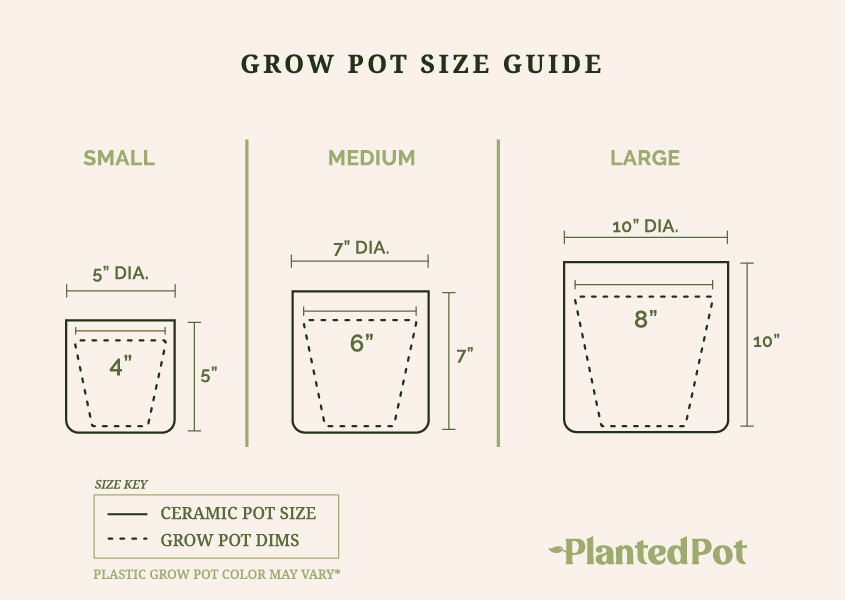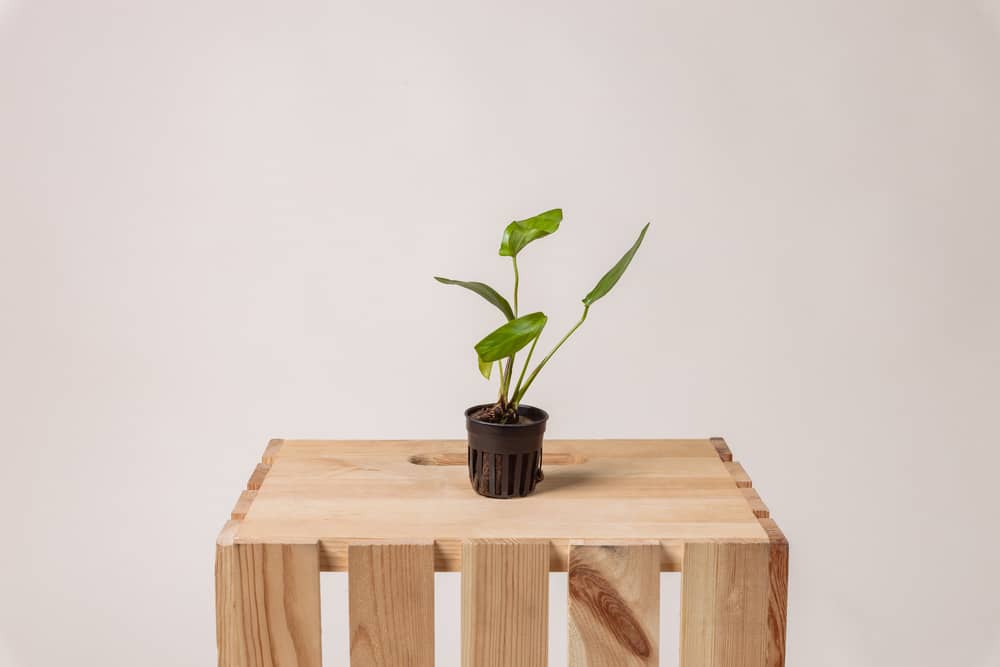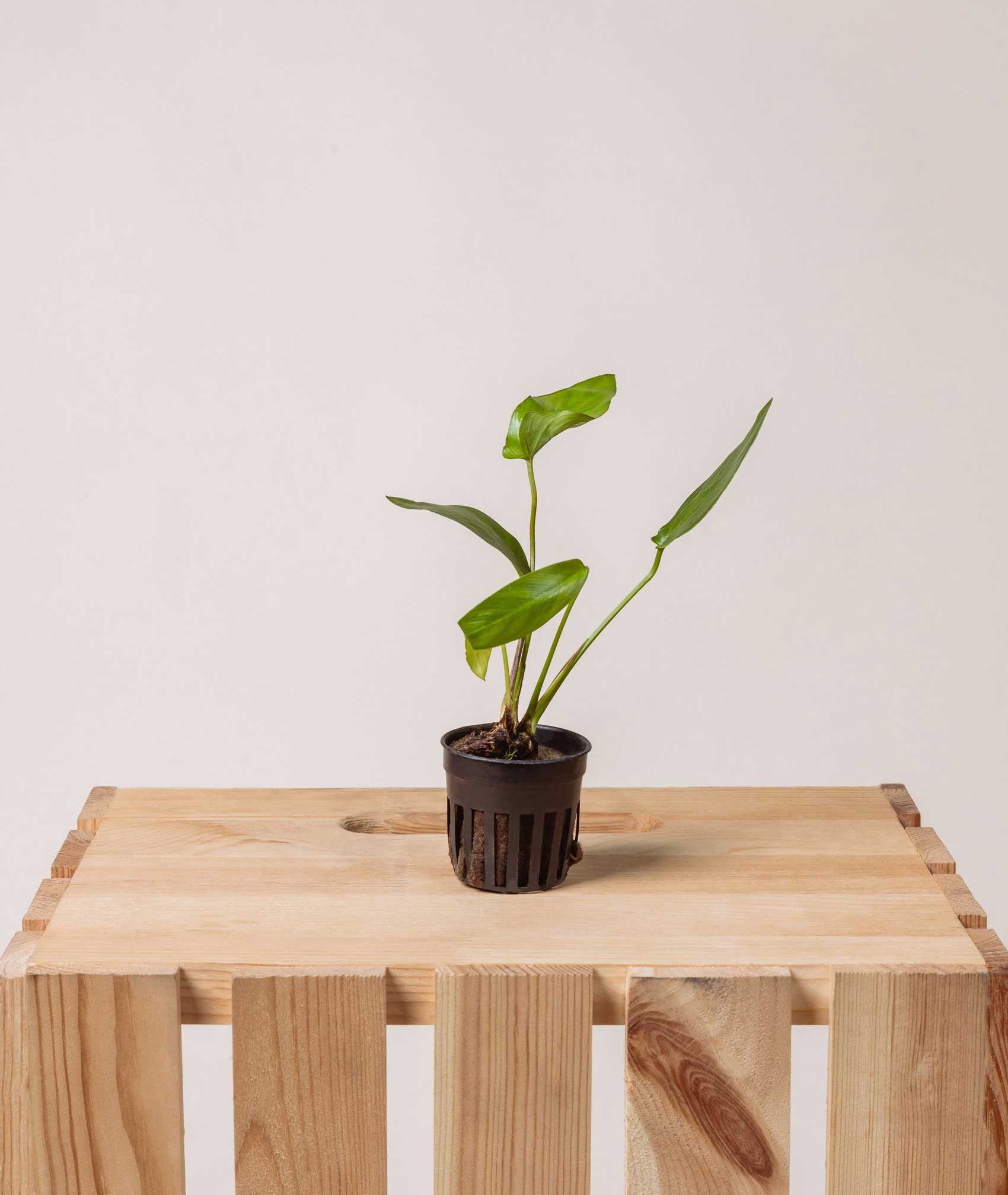
Anubias Congensis
$44
 Plastic grow pots come in different colors, you may receive a black or rust colored pot.
Plastic grow pots come in different colors, you may receive a black or rust colored pot.
Want to be notified when this product is back in stock?
This aquatic plant has a simple, classic look. Its thick, oval-shaped leaves are unusual among aquatic plants and have the look of an above-ground plant. However, it’s meant to be in the water as the deep green leaves provide fantastic refuge for aquarium dwellers. When it comes to decoration, this plant is both durable and versatile. The Aquatic Anubias Congensis can provide the green highlights every aquarium needs. This water-swelling plant does best in moderate lighting attached to aquarium driftwood or rocks.
Medium light. 2 to 3 watts per gallon provided by a fluorescent fixture with daylight bulbs (5000-7000°K).
This plant grows submerged in water.
72°-82°F (water temperature)
Related Products
Anubias Congensis
The Anubias Congensis ranks among the most popular aquarium plants on the market, and for good reason. Members of the Anubias genus are some of the easiest plants to care for. They don’t need soil or substrate, thrive without fertilizer, and get all the water they need from their surroundings.
Whether you’ve kept an aquarium before or are just setting up your first tank, you can’t go wrong with an Anubias Congensis. Experienced aquarists love this species because it helps to keep the tank environment clean and healthy. Beginners love how easy it is to care for.
Keep reading to learn more about this wonderful water plant and the role it can play in your aquarium.
What is an Anubias Congensis?
Anubias Congensis is a freshwater aquarium plant native to the rivers of Central Africa. Botanists first described this species in the early 1900s. Confusion came when multiple botanists claimed the discovery, and each of them gave the plant a different name. To this day, the plant is also known as Anubias Heterophylla, Anubias Affinis, Anubias Engleri, Anubias Bequaerti, and Anubias Undulata.
In nature, these plants are often found with their roots attached to rocks or wood. They may be partially submerged or fully underwater. Anubias Congensis is a flowering plant that tends to bloom from late summer to early winter. It produces very small white flowers that resemble tiny calla lilies.
Anubias Congensis is meant to grow in aquariums and share its environment with other lifeforms. This creates a symbiotic ecosystem in the tank. The plants provide oxygen to the fish, and the fish, in turn, provide CO2 and biowaste to fertilize the plant. You can grow one of these beauties all by itself if you want, but doing so requires CO2 supplements and fertilizer. Still, for this plant to achieve its full potential, it should be part of a larger, biodiverse display.
Plant Size
Anubias Congensis grows 8-20 inches tall. Place it in the mid-ground of a tank to give depth to the aquarium scenery and provide shelter for smaller fish. Its leaves vary in form, from oval to spear-shaped. They reach a max length of 14 inches and a max-width of around 5 inches.
Water Parameters
Anubias Congensis lives in water, so there’s no need to worry about maintaining a watering schedule. All you have to do is drop your Anubias into an aquarium and make sure the rhizome (rootstalk) is submerged. To prevent algae growth, which can rot the leaves, keep a steady current going in your tank.
Anubias Congensis can survive in water with pH levels between 5.5 and 8.0. However, they do best when the pH is close to neutral (7.0). This is a plant for freshwater aquariums only.
You should also consider water hardness. Hardness refers to the water’s mineral content, and it can be an issue if your tap water comes from a well. Anubias Congensis needs soft or only slightly hard water, between 5-12 dGH.
Lighting
This species has medium light requirements. Like all members of the Anubias genus, Congensis is a slow grower. High lighting conditions can speed up the growth process, but this comes at a cost. Light exposure can trigger algae growth, causing the leaves to decay.
Temperature
Anubias Congensis is native to warm waters and prefers a temperature between 75 and 80° F. Still, this hardy plant will tolerate a fairly wide range of temperatures. It should be able to thrive in most aquarium climates.

Why Choose an Anubias Congensis for Your Home?
Wondering why Anubias Congensis is so popular amongst aquarium keepers? This plant isn’t just easy to care for. It also improves the overall aquarium ecosystem.
Aquarium plants release oxygen into the water, improving the living conditions for aquatic animals. Plants also play an important role in keeping aquariums clean. They absorb fish waste, uneaten food, and other organic debris.
Another great feature of the Anubias Congensis is that you can keep these plants alongside almost any freshwater species. Many other plants don’t do well in aquariums because herbivorous fish eat their leaves. Not the Anubias Congensis. Fish cannot eat its thick, robust leaves. The exception to this rule is the Pleco fish from the genus Panaque, whose sucker-like mouths can bore holes in the plant’s leaves.
Are Anubias Congensis Plants Good Indoors & Outdoors?
This plant must be kept at least partially submerged in a tank of water. It’s best to keep it indoors so that you can exercise greater control over its environment.
It does well in both aquariums and terrariums, where it can be either totally or partially submerged. Partially submerged Anubias plants still need to have their roots underwater, where they can absorb nutrients.
Are Anubias Congensis Plants Pet and Children Friendly?
There is no evidence to suggest that Anubias Congensis is toxic to humans or house pets. Plus, if you’ve ever bathed cats or dogs, you know that most of them hate getting wet. It’s very unlikely that one of them would get in the tank and wreak havoc on your Anubias.
Children should be taught to keep their hands out of the aquarium for the sake of the plants and fish that live within it. An Anubias Congensis plant poses no threat to them, but a destructive child or animal potentially poses a threat to the plants and fish that live in the aquarium.
Aquatic Anubias Congensis Plant Family Relatives
Add variety to your aquarium by mixing and matching multiple Anubias varieties. All members of this genus are native to the same tropical regions, and they thrive when grouped together. Here are some other Anubias plants to consider for your tank:
- Anubias Barteri: The Barteri is slightly smaller than Anubias Congensis but just as easy to maintain. Its leaves are smaller and rounder than Congensis, creating a nice visual contrast when the two are paired.
- Anubias Gigantea: As its name suggests, this is the largest Anubias species. It grows up to 2 feet tall, and its arrow-shaped leaves are around a foot long and 6 inches wide. It typically grows only partially-submerged, and in rather large tanks.
- Anubias Nana: On the other end of the size spectrum, we have Anubias Nana. At a mere 4 inches tall, it’s easy to see how this plant earned its common name, “Dwarf Anubias.” With its eye-catching heart-shaped leaves, Anubias Nana is a perfect foreground plant.
- Anubias Barteri var. Lanceolata: This species has a similar size as Anubias Congensis, but its long stems and thin, pointed leaves set it apart from other members of the Anubias genus. The unique appearance of Lanceolata contrasts nicely with the Congensis and Barteri species in particular. Arrange them all together to create a visually diverse aquascape.
Plant Types That Are Similar to the Aquatic Anubias Congensis
The key to a healthy ecosystem is biodiversity. To emulate a diverse environment within the confines of your aquarium tank, fill the space with a variety of plant species. Here are some hardy aquarium plants that pair nicely with this water plant:
- Java Fern: The Java Fern’s resilient nature and simple needs are rivaled only by the Anubias. With a max height of 10 inches, it is smaller than Anubias Congensis, and its leaves are long with ruffled edges.
- Vallisneria: Turn the rear of your aquarium into a lush jungle scape with the Vallisneria. Reaching up to a foot and a half in height, they are a classic background plant. Vallisneria grows much faster than Anubias plants but needs fertilizer.
- Cryptocoryne Lutea: At 6-8 inches tall, Cryptocoryne Lutea is the perfect midground plant to pair with the Anubias Congensis. It enjoys the same moderate to low light levels as the Congensis, and it is more resilient to different pH levels. However, this plant does need regular fertilization.
Final Thoughts – Aquatic Anubias Congensis
Even if you’re brand new to the aquarium hobby, you can confidently care for an Anubias Congensis. It requires no routine watering, no soil, no fertilizer, and only moderate light. Could it get any easier?
The Anubias Congensis is resilient and requires no soil, so they are exceptionally good travelers. They ship easily and arrive at your door in perfect condition, ready to liven up your tank.




Reviews
There are no reviews yet.